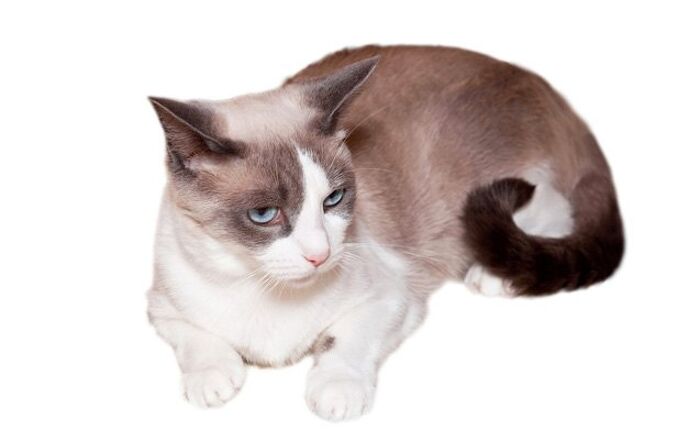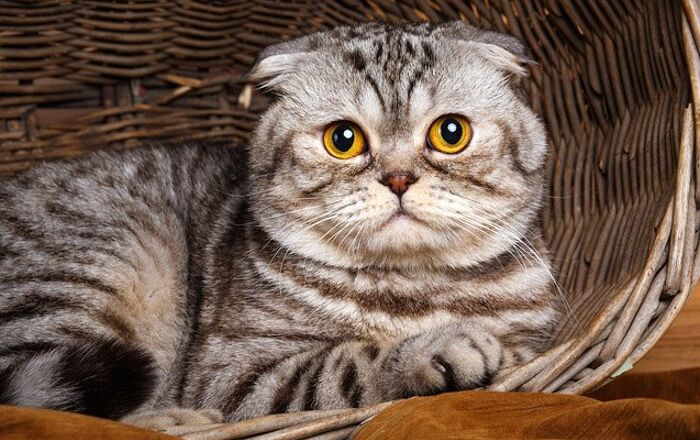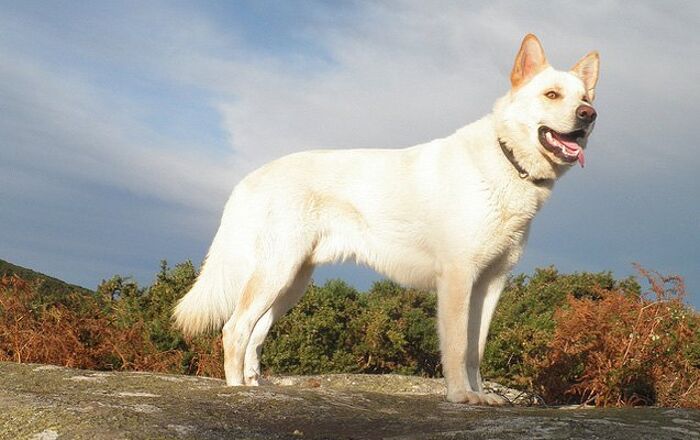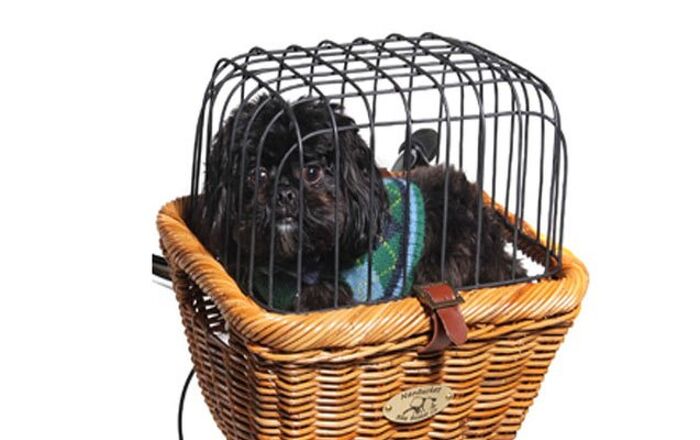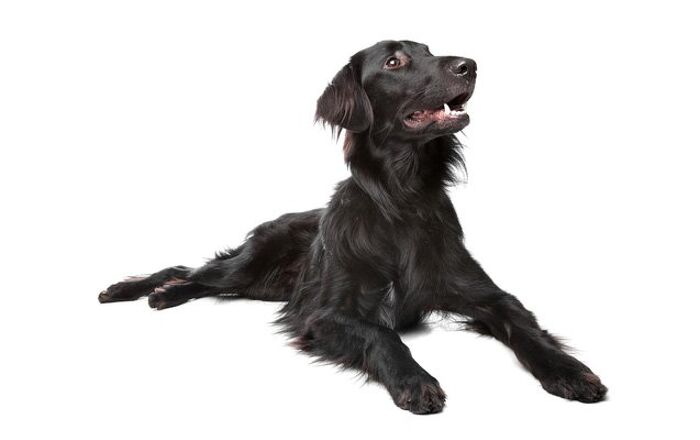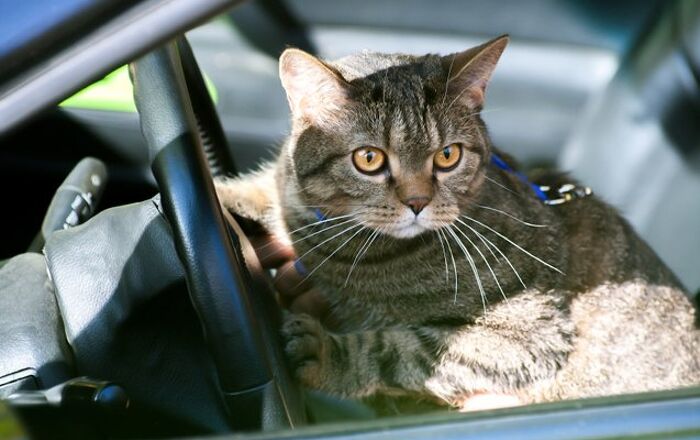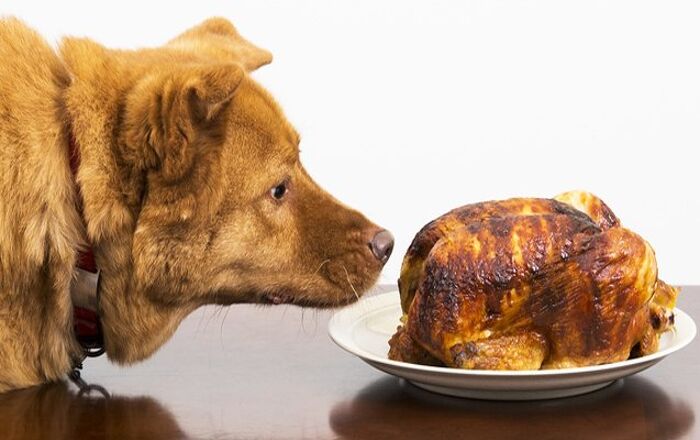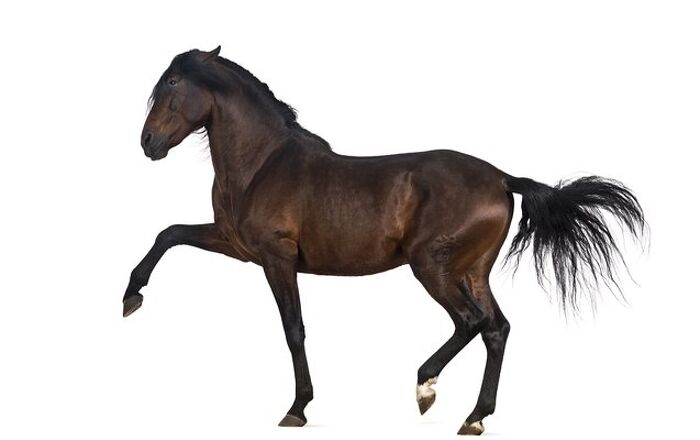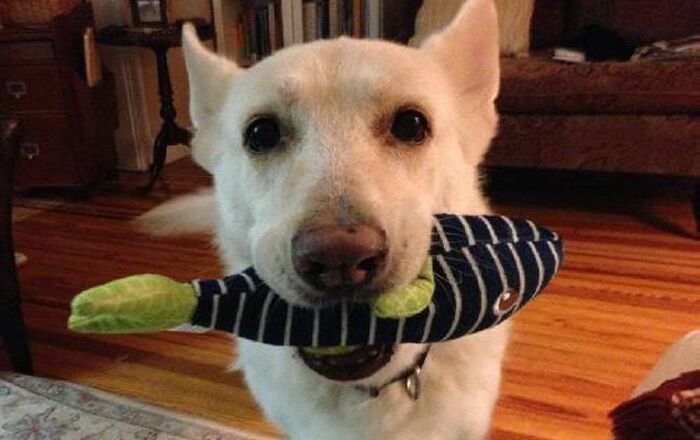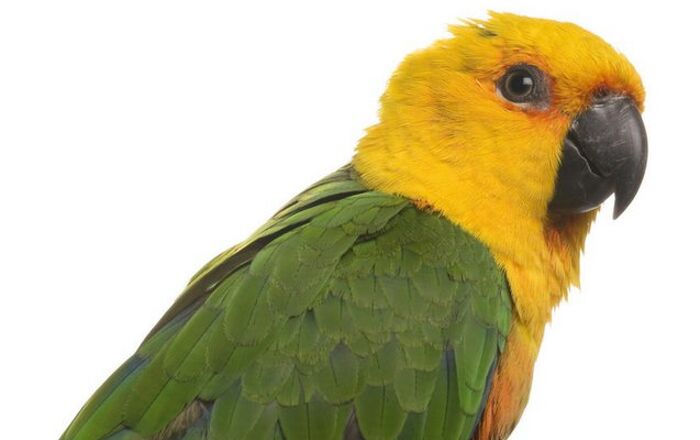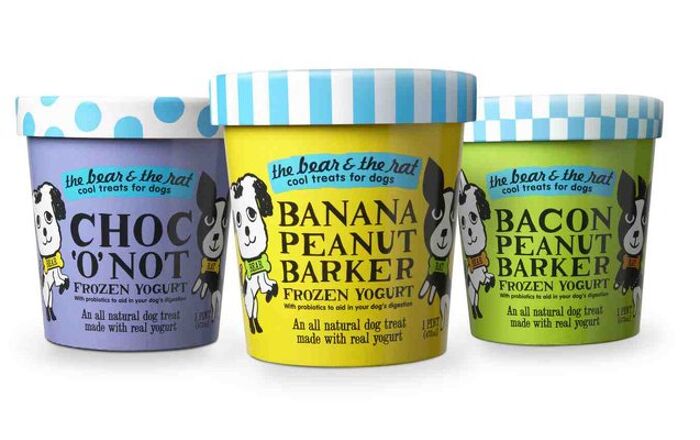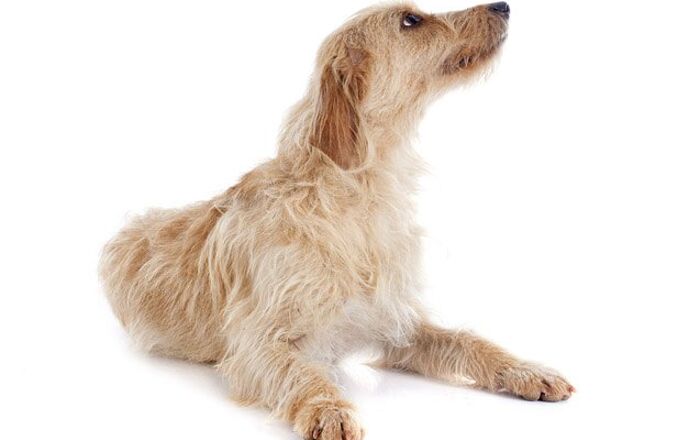
Goldendale Basics
The loving, devoted Goldendale is a wonderful family dog that brings together the sweet, gentle nature of the Golden Retriever with the vigilant, independent character of the Airedale Terrier. This athletic pooch is ideal for active families with kids and other dogs but will require socialization in order to get along with smaller animals as the terrier in him will be prone to chasing and potentially injuring or worse. In spite of his predatory instincts, this is an affectionate family dog that is loyal to his human pack and quick to bark at new faces or strange sounds which makes him an ideal watchdog. Because the Goldendale is the result of crossing two highly intelligent breeds, he needs substantial mental stimulation to prevent him from becoming bored and picking up destructive behaviors such as chronic digging, chewing and barking.
The devoted Goldendale brings together the independent character of the Airedale Terrier and the gentle nature of the Golden Retriever.
Origin

Considered a Designer Dog, the Goldendale would have first appeared back in the 1980s or 1990s when breeders first began crossing two (and sometimes three) popular pure-breds to produce a dog that was often healthier, non-shedding and sometimes smaller and gentler than many of the parent breeds. In spite of the Goldendale’s history being restricted to just 30 years or so, his parent breeds bring some pretty impressive lineage to the mix. With the Golden Retriever, he was developed back in mid-19th century Scotland in response to the need for a hunting companion that was adept both on land and in water and could retrieve waterfowl without damaging or crushing the bird. Today, there are American, Canadian and British versions of this iconic pooch and all possess his gentle nature and loving personality. With the Airedale terrier, you have the tallest of the terrier breeds (AKA the “king” of terriers) that was developed near River Aire in northern England around the mid-19th century for use in hunting and flushing out quarry.
Pedigree
The American Kennel Club (AKC) is committed to advocating for pure-bred dogs and as a result, the Goldendale does not qualify to become a member. That said, both of this dog’s parent breeds are long-time members; the Airedale terrier joined the club’s “terrier” group back in 1888 and is described as friendly, clever and courageous while the always popular Golden Retriever was named to AKC’s “sporting” group in 1925 and he’s considered to be a friendly, intelligent and devoted.
Food/Diet
Your new Goldendale should be eating a dry food that is rich in nutrients and specifically designed to meet his age, weight and activity level. Although this is an energetic breed who loves to be out on walks and chasing balls, he can actually be prone to obesity and when you have a dog that may inherit joint issues later in life, it’s important to establish a feeding routine that will satisfy his hunger as well as help him maintain an ideal weight. The Goldendale may also be prone to digestive issues that include a serious ailment called bloat. As a result, you should plant to provide him with 2 to 3 smaller meals throughout the day versus allowing him to free-feed. Additionally, you should never plan any activity or exercise with a dog that may be prone to bloat for at least an hour after he has eaten. And when seeking out a quality food, look for those that list protein over fillers (carbohydrates) to help keep him feeling satisfied and avoid having a moochy pooch.
The devoted nature of the Goldendale makes him a loyal, protective family dog.
Training
Although Goldens are the quintessential people-pleaser and both they and the Airedale are extremely intelligent breeds that are known to learn commands quickly, your Goldendale may well pick up the independent, wilful streak of the terrier and make training a little bumpy. Because of this, you will need to begin his training while he is still young – even in the 8- to 10-week range – before he becomes too opinionated and refuses to cooperate. Socialization will be a big part of this pup’s training and it needs to begin soon after you bring him home. Exposing him to new people, places and situations will help build his comfort level with different experiences and discourage aggressive behaviors. Although this dog will respond well to a rewards-based approach to training that includes treats and lots of praise, he will also need to understand who leads his pack, so a firm, consistent approach that establishes his owner as top dog, is important. Because all Goldens crave praise, create opportunities where he can show you how well he has picked up commands and reap the associated rewards.
Weight
When your Golden Airedale reaches adulthood, you can expect him to weigh somewhere in the range of 50 to 75 pounds. A little more than the Airedale but less than the Golden. You can his weight to be determined by your dog’s gender as well as how heavily the DNA from each side of his parent breeds influences his make up.
Temperament/Behavior

The devoted nature of the Goldendale makes him a loyal, protective family dog who won’t hesitate to step up and bark when he feels his human pack may be in danger – so he has great watchdog potential. In spite of the retriever (and because of the terrier) in him, this pooch can become aggressive if overly provoked or suddenly if suddenly presented with new faces or other dogs, so early socialization is a must to ensure he knows how to play nice with new faces, other dogs and even your kids. Although Goldens are notorious for suffering from separation anxiety when left alone for long periods, the Goldendale may well inherit the terrier’s independent streak which can make him rather aloof and self-sufficient. While this benefits those working outside of the home during the day, mental stimulation is still critical and if he feels he isn’t getting his fair share of the attention, he may become destructive; chewing, digging and barking incessantly. Puzzle games and toys may help alleviate his boredom for short periods of time.
Common Health Problems
It’s not untypical for Designer Dogs to be healthier than either of their pure-bred parents however research into potential ailments and conditions that may present down the line, is important to have done before you welcome your new pup. With the Goldendale, this can include digestive issues including bloat and colonic troubles as well as certain cancers from the Golden Retriever. Both breeds contribute the potential of joint issues later in life and typical of larger dogs. But take a deep breath and don’t let this somewhat daunting list of potential medical issues put you off. Your Goldendale is still considered a relatively healthy dog that may well never experience any of these issues throughout his lifetime.
Life Expectancy
With regular exercise, a top-quality food that is specifically designed for his age and size as well as preventative maintenance check-ups with your vet, you can expect for Goldendale to live between 10 and 12 years; which is about average for a medium-large sized dog.
Exercise Requirements
The Goldendale is an energetic dog that will require regular daily exercise such as walking, hiking and running as well as interactive playtime that can help meet his need for mental stimulation. Throwing a ball or a Frisbee that he can catch and return are a great way for him to burn off energy, receive the praise all Goldens crave and bond with you as his owner. Off-leash parks are another great option but because this pooch can become aggressive if not properly socialized, you need to ensure he has been trained and that he can be trusted to not harm or chase smaller dogs. As the Airedale side of this dog includes terrier DNA, he will be inclined to wander off at any opportunity so ensure the dog park is fully fenced before letting him off-leash. The terrier in this pooch is also known for excessive digging and chewing when he becomes bored or frustrated from lack of stimulation, so exercise is not an option, it is a must for the Goldendale.
The alert Goldendale won’t hesitate to step up and bark if he feels his human pack is in danger.
Recognized Clubs
Because he is a cross of two different pure-bred dogs, the Goldendale doesn’t qualify to join the American Kennel Club (AKC) which is dedicated solely to promoting pure-bred dog breeds. He is however, recognized by the International Designer Canine Registry (IDCR) and the Dog Breed Registry (DBR).
Coat
Your Goldendale could inherit the long, wavy coat of the Golden Retriever or the shorter, coarse coat of the Airedale Terrier. Either way, this dog will have the thick double-coat that is common to both breeds and will shed throughout the year – heavier during shedding season – and require regular brushing. The difference is “how much” brushing. If he inherits the Golden’s longer coat, he will need daily brushing to avoid matts and tangles whereas the Airedale’s shorter, wiry coat can get by with a quick brush-out once or twice a week to keep loose hair in check. Professional grooming for the shorter coat includes clipping or hand-stripping as infrequently as twice a year with bathing only as necessary. If your pooch inherits the Golden’s floppy ears, you should plan to inspect and clean weekly – which is as simple as doing a quick wipe with a damp cotton ball. Failure to clean his ears can result in dirt and bacteria building up and the result being a smelly yeast infection that is uncomfortable for your pooch and off-putting for pet parents. Particularly if your Goldendale loves to swim, ear inspections are essential to ensure the inner ear and flap have dried properly so that moisture can’t build up.
Puppies
Goldendale pups can be headstrong little guys who ultimately grow up to be big, headstrong dogs that are difficult to train, unruly and less than ideal family pets as the urge to chase and act aggressively towards strangers takes over. The key is to socialize them while they are still young and this can begin at just a few weeks of age. Gentle handling that exposes him to new faces, sights and sounds will help build his comfort level and when kept positive and controlled, it will discourage the aggression that can come from fear. Your new pup will also have a very healthy appetite that needs to be monitored and capped as he reaches maturity (near the 18-24- month mark). This dog’s propensity to gain weight and suffer from not only joint issues but bloat later in life means you need to establish and maintain ideal weights for him as he grows and your vet can help you with this. Monitor his treat intake and ensure exercise is vigorous enough to build healthy muscle, but not so taxing that it could injure tiny joints.
Photo credit: tiggra/Shutterstock; Jana Behr/Shutterstock; Bildagentur Zoonar GmbH/Shutterstock

